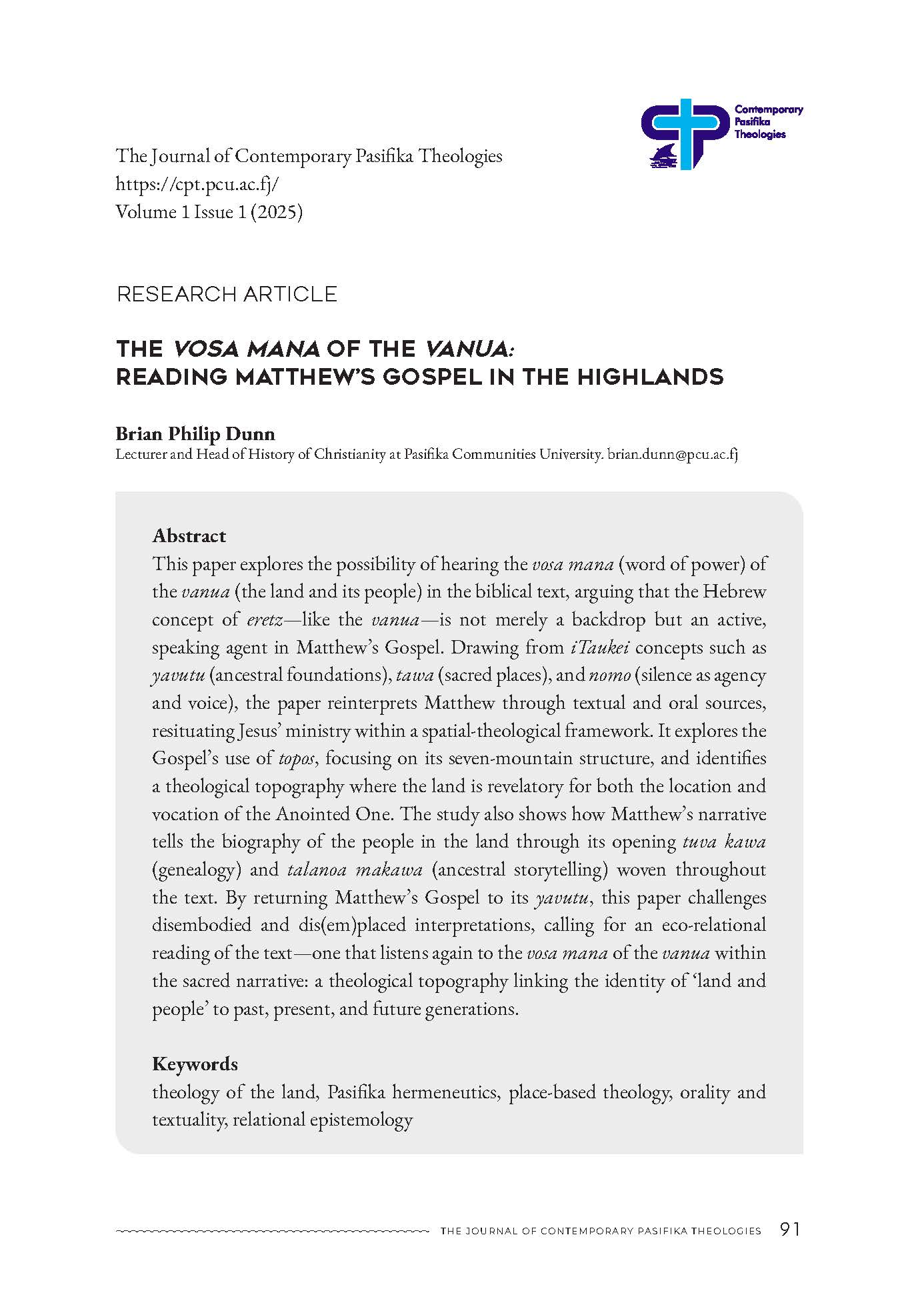The Vosa Mana of the Vanua
Reading Matthew’s Gospel in the Highlands
DOI:
https://doi.org/10.82025/cpt.v1i1.490Keywords:
theology of the land, Pasifika hermeneutics, place-based theology, orality and textuality, relational epistemologyAbstract
This paper explores the possibility of hearing the vosa mana (word of power) of the vanua (the land and its people) in the biblical text, arguing that the Hebrew concept of eretz—like the vanua—is not merely a backdrop but an active, speaking agent in Matthew’s Gospel. Drawing from iTaukei concepts such as yavutu (ancestral foundations), tawa (sacred places), and nomo (silence as agency and voice), the paper reinterprets Matthew through textual and oral sources, resituating Jesus’ ministry within a spatial-theological framework. It explores the Gospel’s use of topos, focusing on its seven-mountain structure, and identifies a theological topography where the land is revelatory for both the location and vocation of the Anointed One. The study also shows how Matthew’s narrative tells the biography of the people in the land through its opening tuva kawa (genealogy) and talanoa makawa (ancestral storytelling) woven throughout the text. By returning Matthew’s Gospel to its yavutu, this paper challenges disembodied and dis(em)placed interpretations, calling for an eco-relational reading of the text—one that listens again to the vosa mana of the vanua within the sacred narrative: a theological topography linking the identity of ‘land and people’ to past, present, and future generations.

Downloads
Published
How to Cite
Issue
Section
License

This work is licensed under a Creative Commons Attribution-NonCommercial 4.0 International License.
